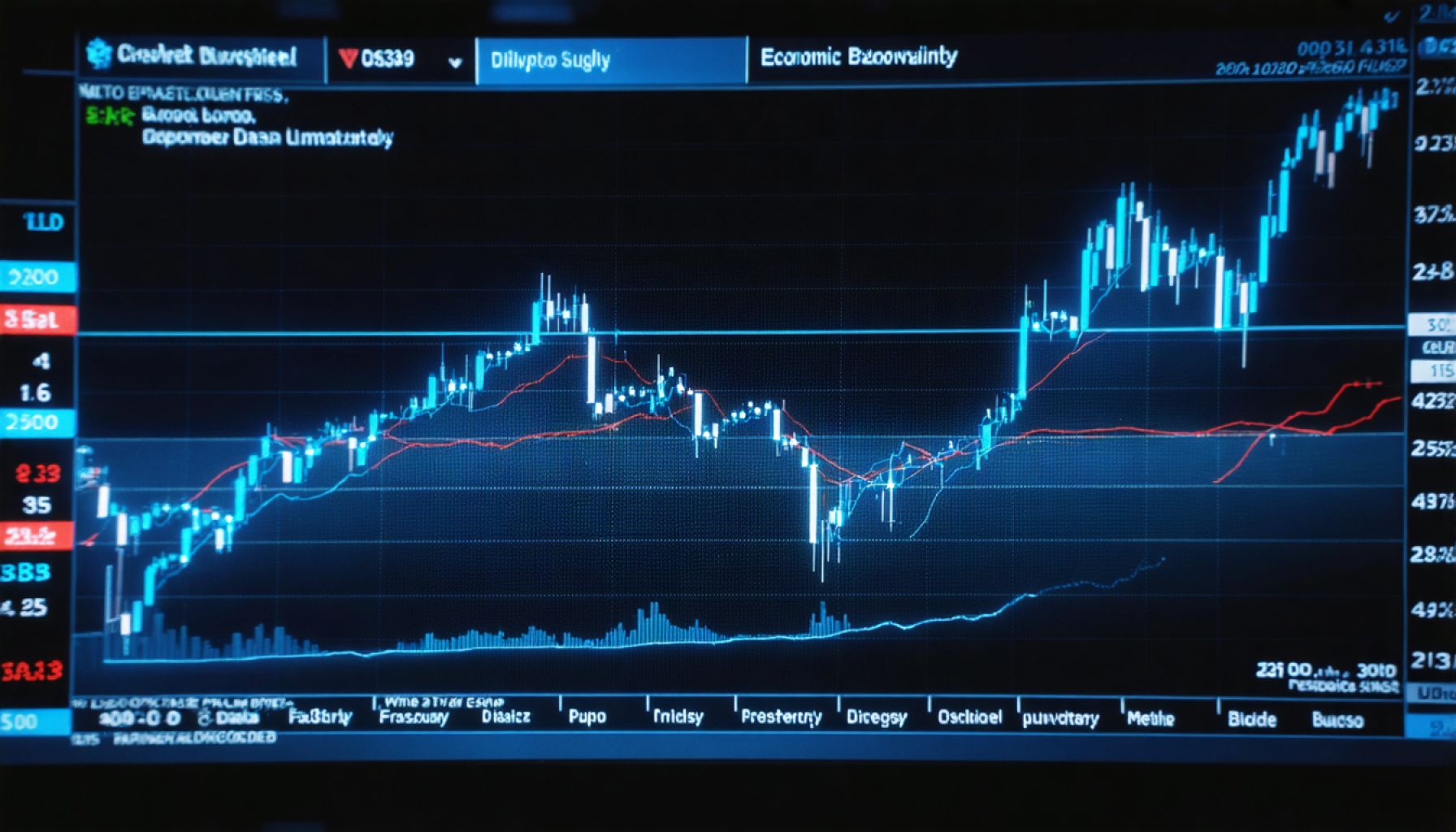- Stock index futures experienced slight declines amid investor caution due to anticipated tariff announcements and labor market data.
- S&P 500 futures dipped 0.4%, while Nasdaq 100 and Dow futures fell by 0.2% and 0.4%, respectively, reflecting market apprehension.
- The announcement of new tariffs, dubbed “Liberation Day,” by President Trump has traders concerned about potential global supply chain disruptions.
- The 10-year Treasury note remained steady, reflecting ongoing market uncertainties and anticipation of labor data.
- U.S. labor data remains a critical indicator for economic trends as analysts seek insights from resilient yet slowing job growth.
- Economists and traders closely monitor employment data, debating whether changes signal economic expansion or potential downturns.
- Vigilance and informed analysis are essential for understanding market signals amid global financial uncertainties.
Against the backdrop of a jittery financial landscape, stock index futures wavered on Tuesday morning, reflecting investors’ cautious anticipation of upcoming tariff announcements and pivotal labor market data. The tension was palpable as S&P 500 futures nudged down by 0.4%, while both the tech-heavy Nasdaq 100 and the venerable Dow showed similar dips of 0.2% and 0.4%, respectively.
The market’s tepid start to the day was primarily fueled by the specter of new tariff policies, whimsically dubbed by some as “Liberation Day,” set to be unveiled by President Trump. The implications of these tariffs have left traders on the edge, mulling over potential ripple effects across global supply chains.
Meanwhile, the 10-year Treasury note, a traditional barometer of long-term economic prospects, stood in quiet rebellion against the day’s uncertainties, holding its ground. The steadiness of this benchmark interest proxy underscores the anticipation of labor numbers, which analysts eagerly dissect for clues about the health of the economy.
Vivid in their anticipation, market participants await the U.S. labor data—a monthly ritual providing a pulse check on employment trends. Recent reports have painted a mixed picture; job growth remains resilient, yet the pace has decelerated, fueling debates over economic expansion and potential dips. Economists often dance a fine line, attempting to discern if these fluctuations herald a greater economic story or simply noise in the broader orchestra.
Such market movements are part of a larger narrative, one that oscillates between assured growth and tentative trepidation. Investors and policymakers alike remain acutely aware that every data point—every job added or lost—can pivot market sentiments dramatically.
Key in these turbulent times is the prudent acknowledgment of these signals—a reminder to market participants and observers that vigilance, coupled with informed analysis, grants a clearer window into unfolding economic realities. As the world watches with bated breath for more tangible guidance, the essence of today’s story lies in navigating both the knowns and the unknowns of our interconnected financial world.
The Impact of New Tariffs and Labor Data on Stock Markets: What You Need to Know
The financial world is on edge, with stock index futures experiencing fluctuations in response to upcoming tariff announcements from President Trump and critical labor market data. Amid this uncertainty, stakeholders are increasingly vigilant over how these two elements, tariffs and jobs, might influence the broader economic landscape.
Tariff Announcements: A Closer Look
1. Understanding “Liberation Day” Tariffs
President Trump’s impending tariffs, cheekily dubbed “Liberation Day,” could disrupt global supply chains. The focus on import duties might seem like a protectionist measure aimed at safeguarding domestic industries, but history and economics often reveal mixed outcomes. Previous tariff impositions have resulted in retaliatory actions from trade partners, potential price hikes on goods, and strained international relations.
2. Real-World Impacts
– Supply Chain Disruptions: Tariffs can increase the cost of imported goods, prompting businesses to adjust their supply chains or potentially pass increased costs onto consumers.
– Sector-Specific Reactions: Industries reliant on foreign materials, like electronics and automotive, could see the most immediate impacts, affecting stock performances in these sectors.
– Economic Sentiment: Tariffs often act as markers for the state of international economic relations, influencing investor sentiment.
Labor Market Data: A Critical Economic Indicator
1. The Importance of Labor Numbers
Labor market data provides critical insights into the economy’s health. With recent reports depicting a resilient yet decelerating job growth rate, analysts are closely examining the nuances.
– Indicators of Economic Health: Robust job growth signals a healthy economy, whereas a slowdown might indicate underlying issues.
– Policy Implications: Central banks often use labor data to guide monetary policy. For instance, strong employment figures might lead to tighter monetary policy to control inflation.
2. Current Market Sentiments
– Anticipation of Data: Investors may adjust portfolios based on anticipated labor data outcomes, affecting market volatility.
– Economic Growth Concerns: Wavering labor growth fuels debates on whether the economy is stagnating or poised for expansion.
Pressing Questions
1. How will tariffs impact my investments?
– Diversify Portfolios: Investors should consider diversifying across sectors and geographies to mitigate the effects of tariff-induced volatility.
– Monitor Sector-Specific Trends: Pay close attention to industries that might be affected most.
2. What does labor data mean for interest rates?
– Interest Rate Fluctuations: Strong employment data can lead to interest rate hikes, which impact borrowing costs and can affect consumer spending.
Expert Predictions
1. Market Forecasts: Analysts predict continued volatility until clear tariff policies and labor data provide more direction.
2. Stock Performance: Sectors like technology and manufacturing are expected to remain in focus as tariff details emerge.
Actionable Recommendations
– Stay Informed: Keep abreast of both tariff announcements and labor market reports. News outlets and financial websites often provide real-time updates.
– Strategic Investments: Lean toward investments in domestic companies less reliant on international supply chains.
Conclusion
In a rapidly evolving financial scenario, staying informed and adaptable is crucial. As tariffs and labor data play out, investors should maintain a careful watch on economic indicators, diversify their portfolios, and leverage expert insights for strategic decision-making.
For more insights on market dynamics, visit Bloomberg or Reuters.
